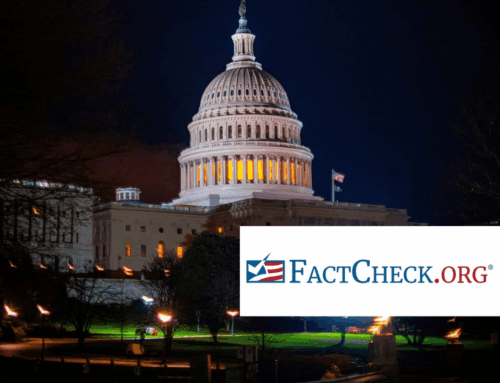The COVID-19 pandemic may force a reckoning for Amtrak’s long-distance routes, bringing about cuts that critics have long urged but that passenger rail advocates in and out of Congress say could undermine the service’s mission.
Pummeled by the pandemic, Amtrak earlier this month began running three times a week what were previously daily long-distance routes. The nation’s only passenger rail system also began cutting 2,050 jobs out of its workforce of 18,500 and has reduced service on other routes as well.
But in cutting long-distance routes, the company is toying with services prized by lawmakers who have vowed to protect them even though they lose money. Amtrak promised when it cut the long-distance service that it was committed “to restoring service levels when appropriate.”
Now, with Congress at an impasse over more COVID-19 relief and ridership still at about 25 percent of pre-pandemic levels, Amtrak has no clear path to restore service. Rail advocacy groups worry that long-distance passengers whom Amtrak loses now won’t come back, thus justifying permanent cuts.
“They are of the opinion that they can temporarily cut back to three times a week and start accepting reservations again in February for the summer, and it’ll be bad but it’ll be OK,” said Jim Mathews, CEO of the Rail Passengers Association. “And we’ve done a lot of math that says that well, no, it’s actually probably not going to be OK.”
Like the U.S. Postal Service, he said, Amtrak is a public service and not designed to make a profit.
Mathews’ organization did a study that found that the $500 million Congress provides annually to Amtrak for long-distance routes results in an estimated $4.8 billion in benefits to the communities served by those routes. That study also found that cutting those routes might save $213 million during the coming fiscal year, but the communities served by these trains would lose an estimated $3 billion in economic benefits if the cuts remain for a year.
“Rural America, rural states, small towns deserve to be connected by modes of transportation beyond the personal automobile,” said John Robert Smith, the former mayor of Meridian, Mississippi, who is chairman of multimodal advocacy organization Transportation for America. Cuts to long-distance service, he said, “will hammer the hometowns those trains stop in.”
But Joshua Sewell, a senior policy analyst for Taxpayers for Common Sense, said the pandemic may inspire policymakers to rethink how they invest in Amtrak.
“It’s tough to justify many of these routes,” he said. “Many of these routes have lost significant amounts of funds and have little to no chance ever to be profitable.”
He said the pandemic has “crystallized” long-standing problems in public investments such as Amtrak.
“It’s not like the pandemic caused the problem,” he said. “It just really focused attention on a preexisting condition of many of these routes. Pandemic or not, many of these routes need to be cut off, frankly.”
Marc Scribner, a transportation analyst with the libertarian Reason Foundation, said subsidies for the long-distance service exceed benefits to riders. They exist in large part because they are politically protected, he said.
“There is no economic justification for continuing these routes,” he said.
But he said he was skeptical that Amtrak, which has relied on federal subsidies since its inception in 1971, would be forced to permanently cut routes.
“Every time in the past it looked like maybe Congress isn’t going to bail them out, Congress shows up at the last minute and bails them out,” he said.
Amtrak’s Northeast Corridor business has been its only reliable source of operating profit, managing to do so even into August despite the pandemic. But because those routes run on the heavily populated East Coast between Washington and Boston, they took a steep revenue hit as businesses shut down and people were urged to socially distance.
Mathews of the Rail Passengers Association said of the three types of routes — Northeast Corridor, state-supported routes and long-distance routes — the long-distance routes have seen a far less dramatic drop in ridership. But he worries that cuts on long-distance routes will spur passengers to find alternatives.
“If I have to do a Talmudic scholarship to figure out how to get from Syracuse, New York, to Kansas City on the train, I’m not going to do it,” he said.
Amtrak spokeswoman Kimberly Woods said the company is still doing the 2,050 layoffs that began this October. “Significant reductions remain necessary due to the slow recovery of ridership and revenue,” she added.
Those cuts may be just the beginning.
Amtrak CEO William J. Flynn, in an Oct. 8 letter to Vice President Mike Pence and Speaker Nancy Pelosi said the company will need at least $4.9 billion for fiscal 2021 to avoid 2,400 more job cuts and capital improvement delays.
In March, Congress approved more than $1 billion for Amtrak in supplemental funding in a relief bill. Lawmakers approved another $2 billion for the company at the end of September in a continuing resolution to fund the government through Dec. 11.
The House included $2.4 billion in emergency supplemental funds for Amtrak in its most recent COVID-19 relief bill, but the Senate hasn’t taken up the measure. Despite the impasse, lawmakers are ardent defenders of the long-distance routes.
In an Aug. 6 Senate Commerce, Science and Transportation Committee hearing for two Amtrak board of directors nominees, Sen. Jerry Moran, R-Kan., fretted that the pandemic would be “used as an excuse to now terminate or significantly reduce” long-distance routes.
“My view is Amtrak is designed to provide long-distance service across the country,” he said. “The metrics of whether or not it should exist is not whether or not it is profitable.”
In June, two groups of senators — a bipartisan group of seven led by Sen. Steve Daines, R-Mont., and a group of five Republican senators led by Senate Commerce Chairman Roger Wicker, R-Miss. — questioned Amtrak’s plans to cut the long-distance routes.
“We would like to ensure that reductions in frequencies for long-distance routes do not unnecessarily extend beyond the COVID-19 crisis,” the latter group wrote.
Sewell, at Taxpayers for Common Sense, said the loyalty of lawmakers is the only thing protecting some long-distance Amtrak routes and preventing service from being slashed in their communities.
“Frankly, the biggest obstacle is Congress,” he said










